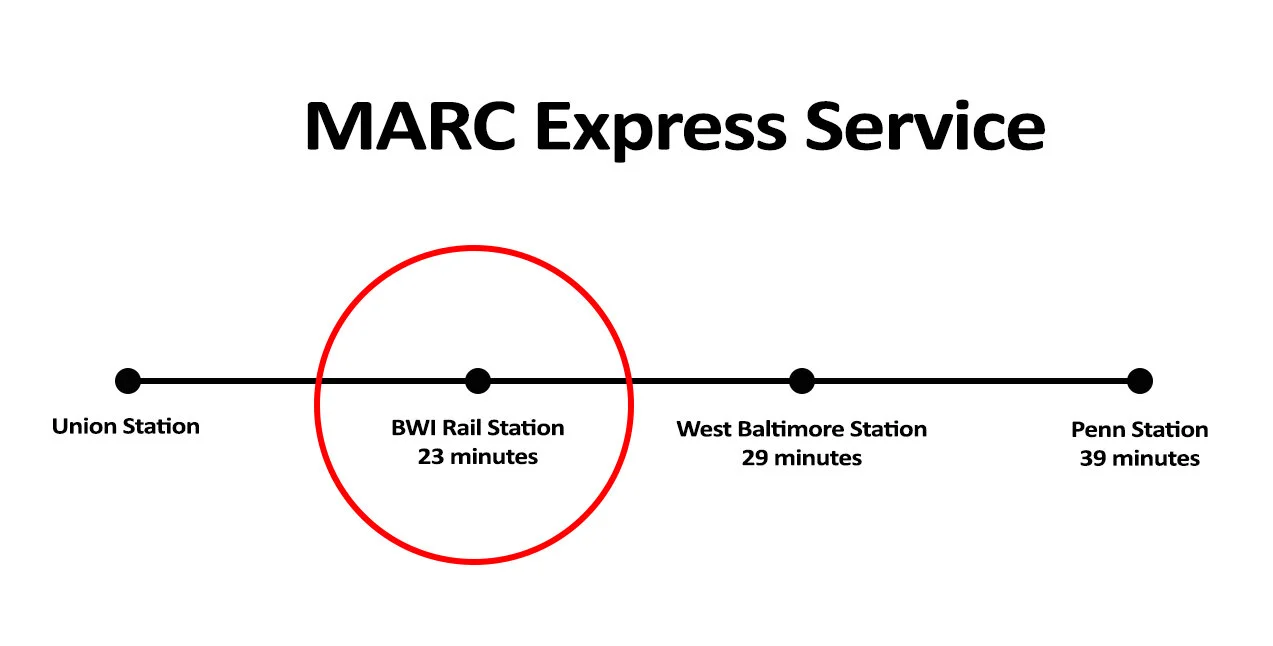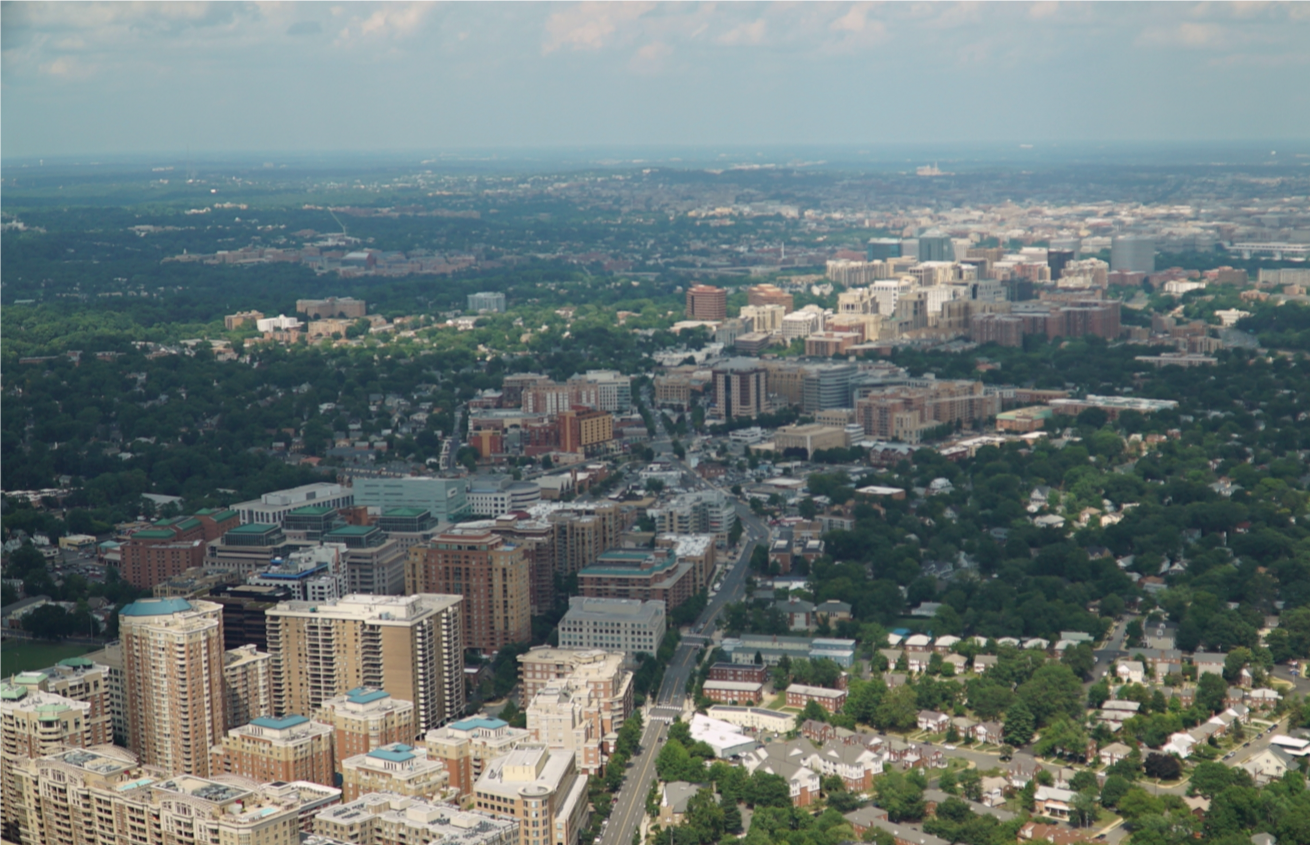BWI and Anne Arundel County
One of the four proposed stops on the MARC Express Service would be BWI Rail Station. And although this website is focused primarily on West Baltimore, it would be a glaring omission if it wasn’t pointed out that what’s good for West Baltimore in this case - MARC Express Service - is also good for Anne Arundel County.
BWI is already the second busiest station in Maryland (after Baltimore Penn), and the 13th busiest in the Amtrak system. But even with that exceptional ridership already in place, at 23 minutes to Union Station, this MARC Express Service could take the station, and the surrounding constituencies and communities, to a whole new level. The affects could be transformational on not just the Thurgood Marshall Baltimore-Washington International Airport, but also the surrounding BWI Business District, and the greater Northern Anne Arundel communities beyond.
MARC Express travel times on this order would not only make BWI the most convenient airport to the eastern half of Washington, including Capitol Hill, but it would also make BWI closer to Washington’s Union Station than even the highly developed Arlington Corridor (below), on the DC Metro’s Orange Line. The level of development there - a poster-child of Northern Virginia’s economic power - would be a shining example of what’s possible for BWI and Northern Anne Arundel County with that level of accessibility.
A 10-minute drive radius shows just how much of Northern Anne Arundel County (and some parts of Howard County and Baltimore City) would be in the nearly half-hour trip window to downtown Washington - again, a remarkable level of commutability.
And the equally attractive TOD zone closer in, with available development space, much of it zoned commercial or industrial, would be likely even more attractive.
The same type of relative affordability as West Baltimore would drive similar growth in the communities around the station.
And if a new modern, reconfigured BWI Rail Station were constructed (as was conceptualized in the 2012 image below), one with rapid direct connections to the airport terminal, and one that had all four Penn Line tracks in use, that rail station could quickly become the dynamic center of a new thriving commercial and residential hub - one with unparalleled access not only to the heart of a great economic engine (Washington), but to virtually any location in the country accessible by air.






